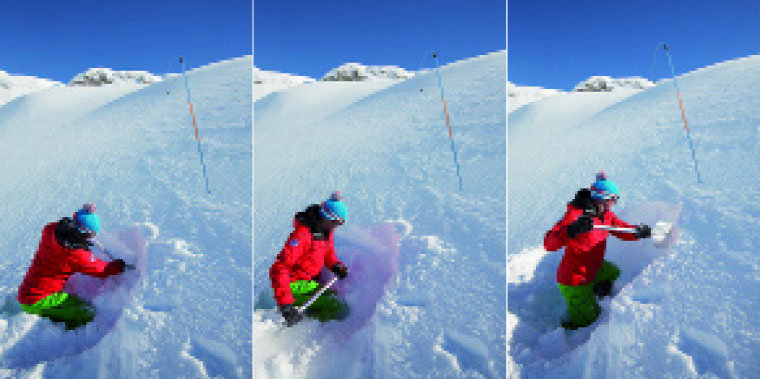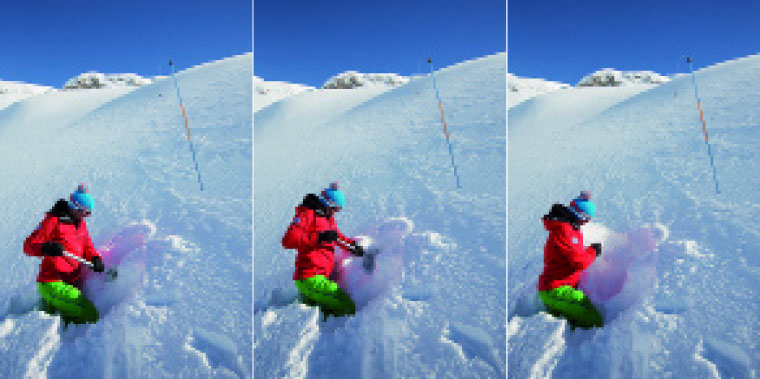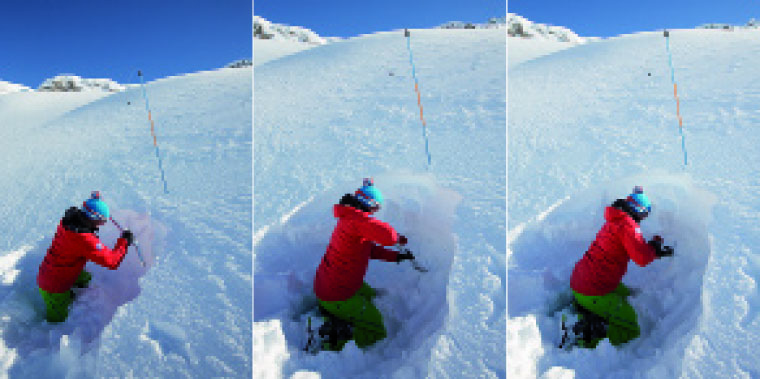How to dig for a companion


With the benefits of modern transceivers and practice, the search phase of any companion rescue should be fast; digging the victim out is what takes time and is extremely hard and tricky work.
A lot of research has been done in this area to find the most efficient way to dig a victim out of an avalanche. As a general principle you want to avoid moving snow more than once, so efficiency is everything.
Effective digging in avalanche debris requires a metal-bladed shovel. Plastic shovels don’t cut the mustard: they flex and bend, do not slice into the debris and are ineffective in digging.

Start by ‘paddling’ the snow to the side – this is best done from a kneeling position. Once you can’t effectively move any more snow this way, change to classic digging.

If the probe strike is less than 1m deep (markings on the probe) start digging one pace downhill from the probe. If the victim is deeper, move 1.5 times the burial depth downhill, and start digging into the hillside towards the victim. Think about digging a ramp down towards the victim, this is the most efficient way to move snow.
The advantages of starting downhill are that there is less snow to move and you won’t compact the snow on top of the victim and compress their air space.

Avalanche debris is usually pretty solid so you may find the best way to move snow is to block it, or compress it, using your shovel then move it. Even dry snow compresses into a solid, hard-to-dig mass, and wet snow sets like concrete.
When digging there is no point in making the front of your hole any wider than 2m; when you find the victim, work out which way round they are facing and dig towards their head.
Several rescuers can rotate as some tire; swapping every minute seems the most efficient. There have been many tests done as to the most efficient use of manpower if there is more than one rescuer. The consensus seems to be:
One rescuer: as above.
Two rescuers:
<1m burial, start just below the probe then work side by side.
>1m burial, one rescuer just downhill of the probe, the second downhill 1.5x the burial depth.
Three rescuers:
<1m burial, one rescuer digs down just below the probe and the other two rescuers dig in from 1.5x burial depth downhill.
>1m burial, two rescuers dig in 1.5x burial depth downhill with the third clearing snow below them.
Four rescuers:
<1m burial, two rescuers work downhill of the probe then the second two work 1.5x the burial depth.
>1m burial, start as above, as the hole gets deep you may want to pull one person out of the hole to create space to work, they can then rotate back into the team as people tire.
Five rescuers:
<1m burial, as with four, but the extra person prepares for the victim and rotates in as the shovellers get tired.
>1m as with <1m.
Photos: Kate Scott